Would you like to go on a Ireland tour with a camper, motorhome, or rental car? A trip like this is a wonderful way to explore the Emerald Isle on your own. The freedom to make spontaneous stops and spend the night amidst breathtaking landscapes makes this type of travel something very special.
Ireland has more to offer than just shamrocks, leprechauns, and Guinness beer. Impressive coastal landscapes, beautiful beaches and islands, cliffs up to 600 meters high, lively cities, charming villages, delicious food, friendly Irish people, and plenty of pubs await you.
In the following article, we present our diverse Ireland tour and give you a few tips that may help you with your travel planning. Have fun browsing!
- What awaits you on the Emerald Isle
- Who is our Ireland tour suitable for?
- Our Ireland tour & route (10 days)
- Sights in Ireland
- 1. Explore Kilkenny
- 2. Maritime port town of Cobh
- 3. Colorful Kinsale & Old Head of Kinsale
- 4. Ring of Beara scenic road
- 5. Killarney – The gateway to the Ring of Kerry
- 6. Killarney National Park
- 7. Imposing Dingle Peninsula
- 8. Kilkee & Kilkee Cliffs
- 9. The Cliffs of Moher
- 10. Cliffs of Moher Coastal Walk
- 11. Charming village of Doolin
- Best time to visit Ireland
- Driving in Ireland
- Toll roads
- Costs of our tour through Ireland
- Packing list for Ireland tour
- Our conclusion on the Ireland tour
What awaits you on the Emerald Isle
Impressive landscapes: Ireland inspires with breathtaking landscapes – from dramatic cliffs and majestic mountains to idyllic coastlines, picturesque beaches, tranquil lakes and dreamy islands.
History and culture:Ireland’s rich history is reflected in magnificent castles, mystical ruins and a vibrant music scene. The warmth of the Irish makes you feel immediately welcome.
Food and Drink: Culinary-wise, Ireland offers a mix of traditional Irish cuisine, modern influences, and a lively pub culture, especially known for its Guinness and hearty meals.
Adventure and Outdoor Activities: For adventurers and nature lovers, Ireland offers a variety of outdoor activities, such as hiking, cycling, fishing, kayaking, and surfing.
Cities and Sights: The cities and villages are colorful and vibrant, while imposing palaces and castles are scattered throughout the country, bringing the country’s history to life.
Weather: The weather in Ireland is generally mild, humid, and changeable. Due to the influence of the Atlantic Ocean and the warm Gulf Stream, Ireland has a temperate maritime climate, which ensures relatively mild winters and cool summers.

Who is our Ireland round trip suitable for?
A trip to Ireland is worthwhile for many types of travelers. For example, Ireland is ideal for nature lovers, culture enthusiasts, and adventurers. The green hills, spectacular cliffs, and idyllic coastlines offer breathtaking landscapes perfect for hiking, cycling, or water sports such as kayaking and surfing.
If you’re interested in history and culture, you’ll find numerous ancient castles, Celtic ruins, and charming villages on the island. Pub lovers will also get their money’s worth, as Ireland boasts around 10,000 pubs. The lively Irish music scene and hospitable locals ensure that travelers quickly feel at home.
In our opinion, Ireland also offers a variety of experiences for families, couples, or solo travelers. From child-friendly attractions to romantic country houses and lively cities, the island has something for everyone.
If you enjoy photography, your heart will quickly beat faster in Ireland. Ireland’s picturesque villages, colorful towns, vibrant pubs, ancient ruins, and dramatic landscapes offer countless photo opportunities. Our camera was in constant use.
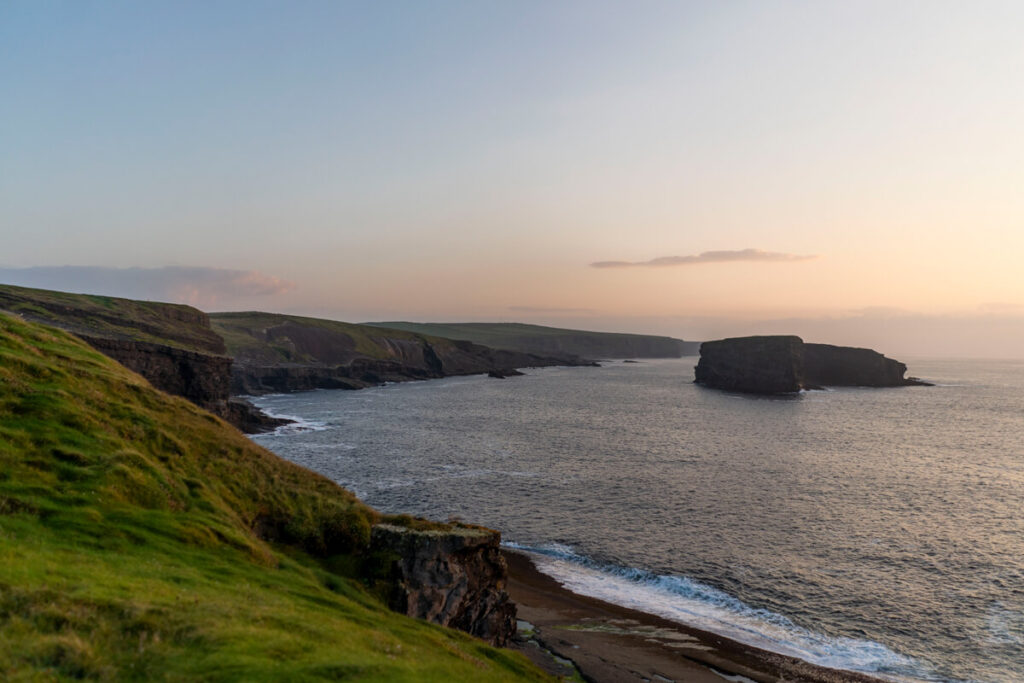
Our Ireland Round Trip & Itinerary (10 Days)
Ireland offers numerous great routes for a round trip, depending on your interests and length of trip. We would have loved to travel the entire country, but we would have needed at least four weeks for that. Therefore, we opted for a mix of city, nature, and culture.
Among other things, we explored part of the Wild Atlantic Way, one of the longest and most spectacular coastal roads in the world. It runs approximately 2600 km along the west coast of Ireland and offers breathtaking views of cliffs, beaches, and the rugged Atlantic coast.
Our overnight locations in Ireland:
- 1 night near Kilkenny
- 1 night in Cobh
- 1 night near Bantry
- 1 night in the Ring of Beara
- 2 nights on the Dingle Peninsula
- 1 night in Kirkee
- 1 night in Doolin
- 1 night near Dublin
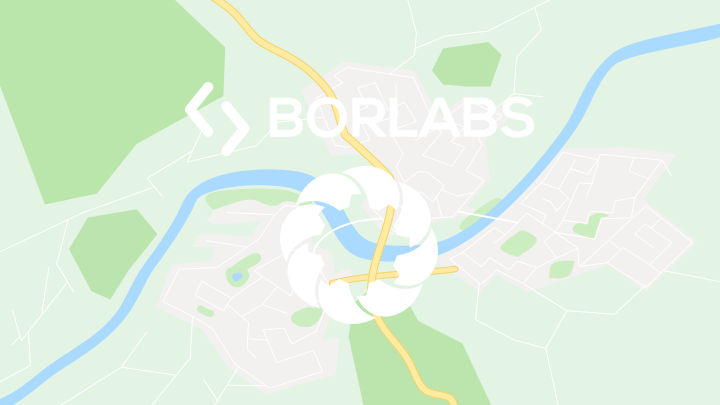
By loading the map, you accept Google’s privacy policy.
Learn more
Load map
Sights in Ireland
Ireland has so many sights to see, it’s hard to know where to begin. The island is certainly not lacking in breathtaking landscapes. Whether it’s the Cliffs of Moher, the Ring of Kerry, the Giant’s Causeway, Slieve League Cliffs, or The Dark Hedges – the country has plenty to offer.
Added to that are the numerous cool cities and villages, islands, national parks, castles, palaces, and ruins. You shouldn’t try to explore the entire country in a short time. Instead, focus on one region and travel at a leisurely pace. This way, you can enjoy all the wonderful experiences much more.
1. Explore Kilkenny
On the first day of our Ireland tour, we explored the charming city of Kilkenny. The narrow, winding streets and colorful houses of Kilkenny give the city its special charm. The city is also known for its lively pub culture, where you can experience traditional Irish music.

Popular attractions in Kilkenny include the 12th-century Kilkenny Castle, the 13th-century St. Canice’s Cathedral, Rothe House and gardens, Smithwick’s Brewery, and Kyteler’s Inn, Ireland’s oldest guesthouse dating back to the 13th century. We also recommend a stop at Café Cakeface, where you can enjoy incredibly delicious coffee and little cakes.
Popular Tours in Kilkenny
- Kilkenny: Historical and Hysterical City Walking Tour*
- Kilkenny Brewery: Smithwick’s Experience*
- Guided City Boat Tour with a View of Kilkenny Castle*
Lovely Accommodations in Kilkenny
- Kilkenny River Court Hotel*
- Kilkenny Hibernian Hotel*
- Butler House Kilkenny*

2. Maritime port city of Cobh
We then continued on to the cozy port city of Cobh, which is not far from Cork. Here, the imposing St. Colman’s Cathedral towers over the city’s rooftops, making for a truly great photo opportunity. Cobh’s harbor is lined with colorful houses and a beautiful promenade. Here you can stroll and enjoy the view of the harbor and the ships.

Cobh was the last landing point of the Titanic before its famous voyage in 1912. At the Titanic Experience Cobh museum, you can learn all about the passengers and the town’s connection to the ship. A short ferry ride from Cobh is Spike Island, also known as Ireland’s Alcatraz. The island has an exciting history as a fortress and prison and offers guided tours (book tickets here).
Popular Tours in Cobh
- Cobh: 3-Hour Cultural Tour Plus*
- 1-Hour Guided Walking Tour of the Titanic Trail*
- 1-Hour Evening Ghost Tour of Cobh*
Beautiful Accommodation in Cobh
- Bella Vista Hotel & Self Catering Suites*
- Westways House*
- WatersEdge Hotel*
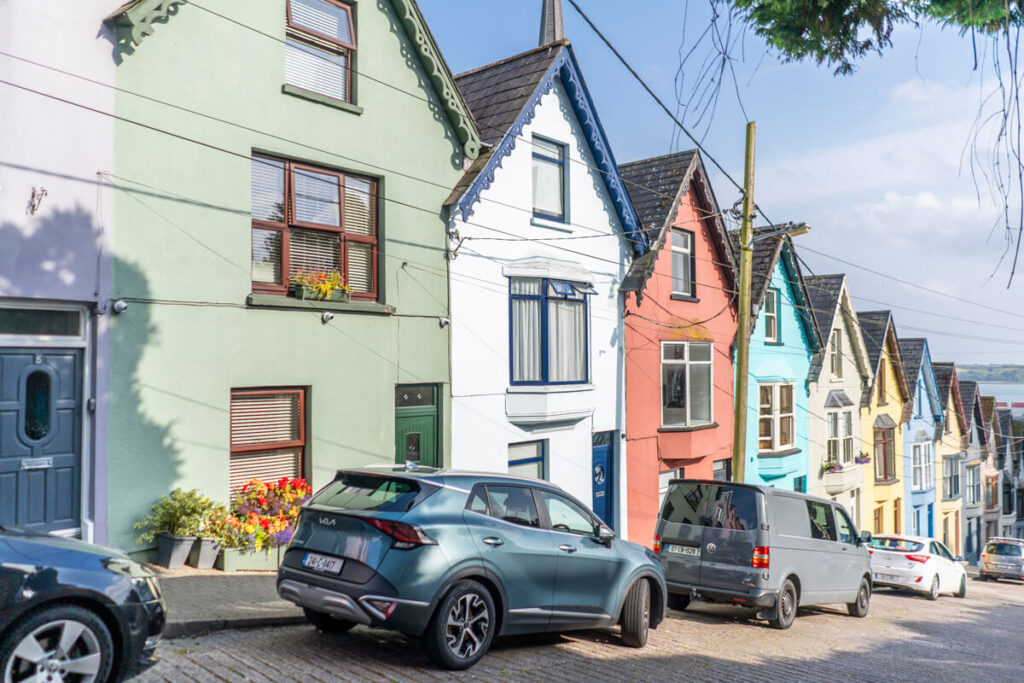
3. Colorful Kinsale & Old Head of Kinsale
We also really enjoyed the charming and extremely colorful town of Kinsale. Here, you can stroll leisurely through the narrow streets, feast in great cafés and restaurants, and marvel at the magnificent harbor. We enjoyed delicious fish and chips at the “Milk Market.” Ordered chips and then had a very good coffee at the OHK Cafe.
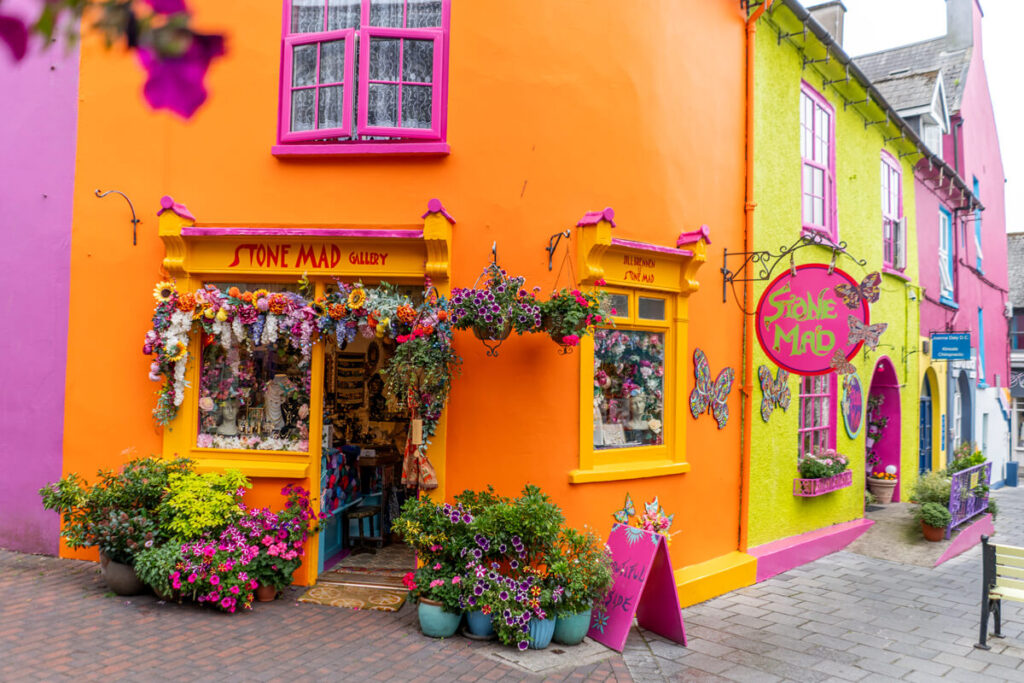
Also recommended are The Post House Coffee Shop and Cups & Cones, where you can order fresh, warm donuts. South of Kinsale is the Old Head of Kinsale, a narrow headland with a rugged and steep coastline. Here you can enjoy some great views in good weather.
Nice accommodation in Kinsale
- The Old Bank Town House*
- Trident Hotel Kinsale*
- Pier House*
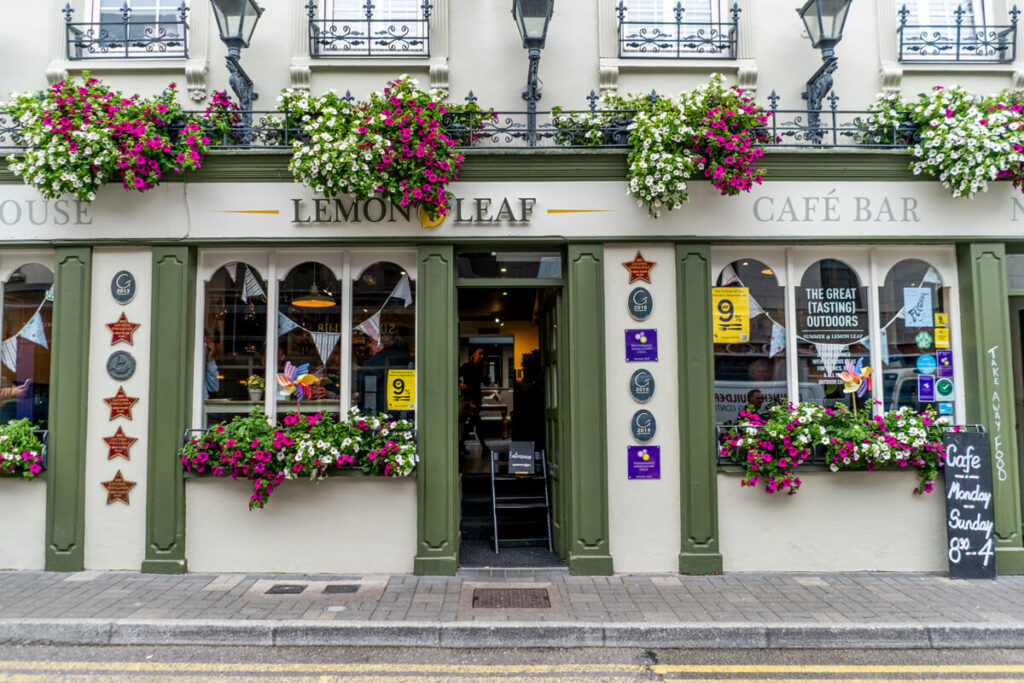
4. Ring of Beara scenic road
The Ring of Beara is a 140 km long scenic coastal road on the Beara Peninsula in southwest Ireland, less well known but certainly just as stunning as the more famous Ring of Kerry. The route offers untouched nature, rugged coastlines, charming villages, and a rich Celtic history.

We drove clockwise around the peninsula and discovered beautiful spots. We didn’t drive the last stretch down to the cable car to Dursey Island because the weather was unfortunately too bad at the beginning. However, we did visit the villages of Castletownbere and Eyeries, among others, which are ideal for a short break.
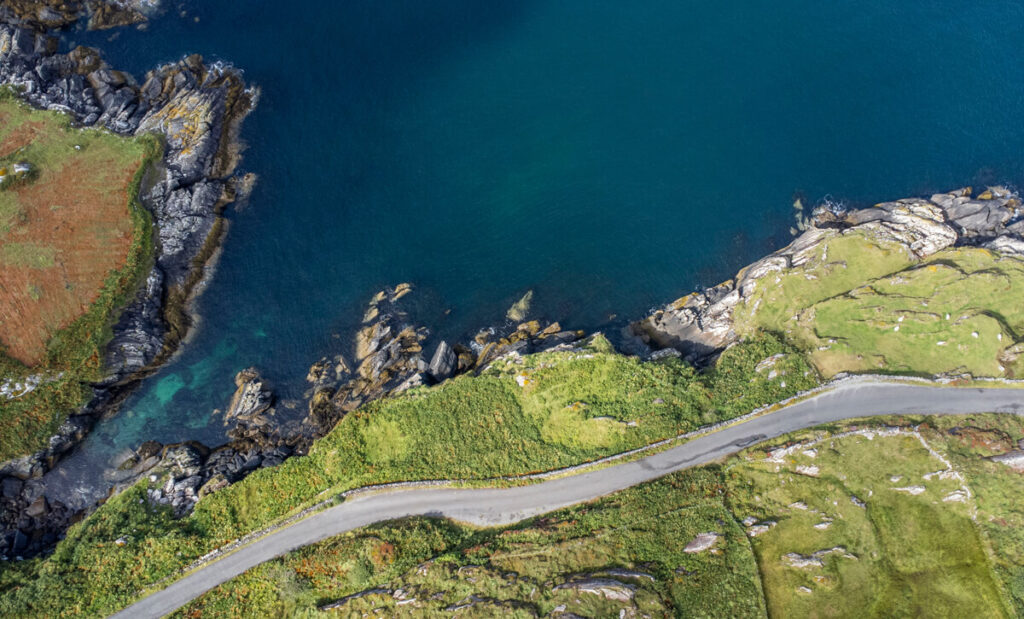
Overall, the Ring of Beara offers a less crowded, yet equally impressive alternative to Ireland’s more popular tourist routes. Another plus: buses are not allowed on the scenic road, which is why the peninsula is very quiet. The roads are sometimes very narrow, but this was no problem with our motorhome.
Popular tours on the peninsula
- Excursion to Dursey Island (accessible by Ireland’s only cable car)
- Drive over the Healy Pass
- Whale watching from Bere Island (accessible by ferry from Castletownbere)
Beautiful accommodations on the peninsula
- Berehaven Pods*
- Mossie’s*
- The Botanical Bell Tent*

5. Killarney – The Gateway to the “Ring of Kerry”
Killarney is the gateway to the “Ring of Kerry” and the tourist heart of the region. The town is lively and charming, with numerous pubs, restaurants, and shops. The pedestrian zone around High Street and Main Street is perfect for strolling and exploring.
A special attraction in Killarney is St. Mary’s Cathedral. Built in the Gothic Revival style, the cathedral was completed in 1855, twelve years after the foundation stone was laid. Another highlight is the Killarney House and Gardens, a historic building with beautiful gardens.
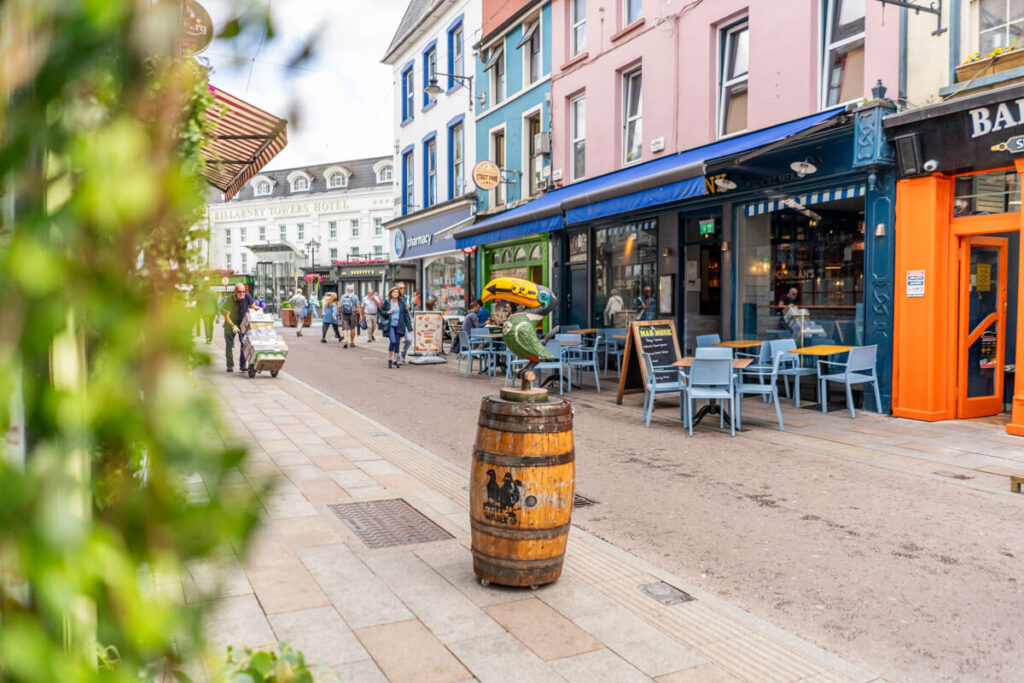
For beer lovers, the Killarney Brewing Company offers an insight into the production of craft beer. The Irish Whiskey Experience, on the other hand, focuses on the history and production of whiskey. We can also recommend the Curious Cat Café and Good Boy Specialty Coffee Roasters.
Popular Tours in Killarney
- Killarney: Hop-On/Hop-Off Bus to Killarney National Park*
- Guided Tour of Killarney with Afternoon Tea*
- Whiskey & Wonders in Killarney*
Beautiful Accommodations in Killarney
- The Lake Hotel*
- The Ross Hotel*
- The Victoria Hotel*
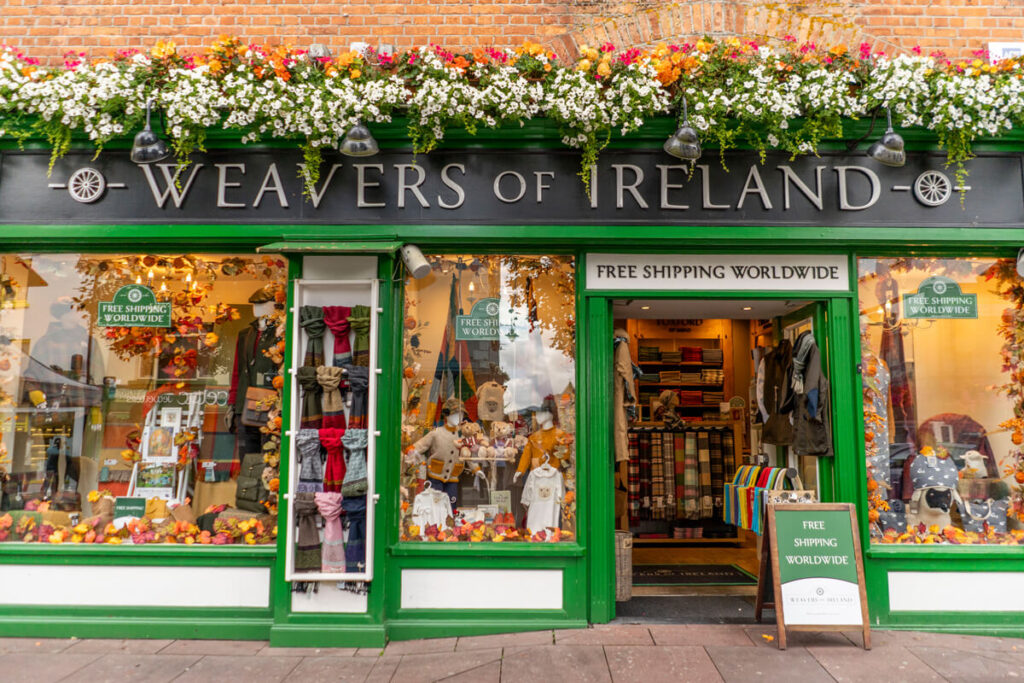
6. Killarney National Park
Killarney National Park features picturesque lakes (Lough Leane, Muckross Lake, and Upper Lake), majestic mountains, and vast forests, ideal for outdoor activities such as hiking and cycling. The park is also home to the famous Muckross Gardens and Muckross House, a magnificent 19th-century mansion that was once home to Queen Victoria in 1861.
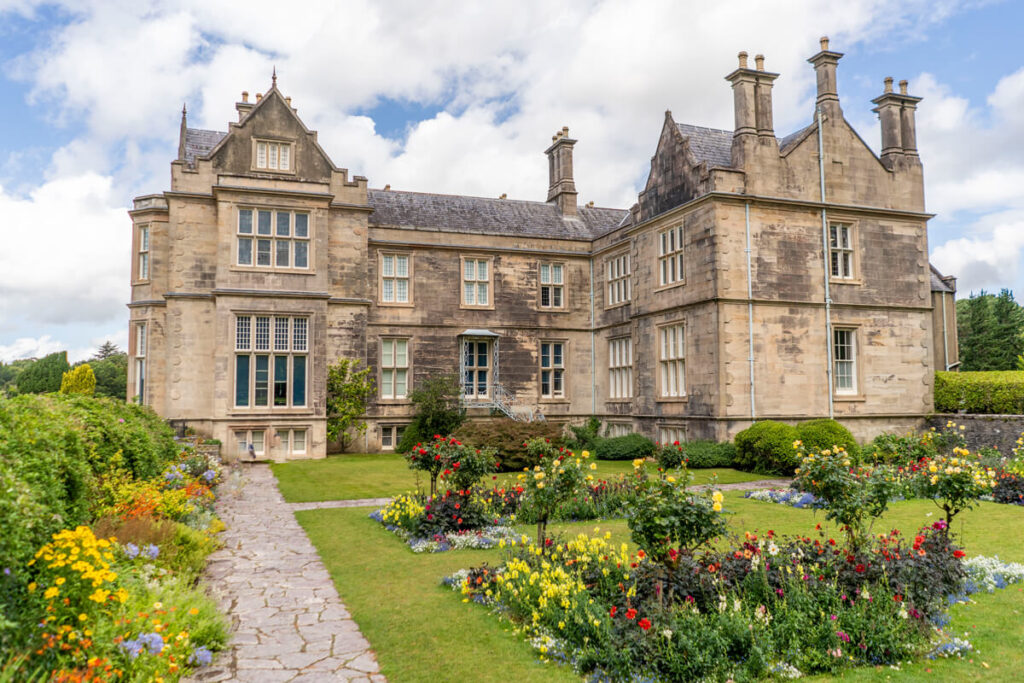
Another popular stop is Torc Waterfall, a beautiful waterfall that’s perfect for a short hike and offers some impressive photo opportunities. One of the most famous landmarks in the park is Ross Castle, located on the shores of Lough Leane. This imposing medieval fortress can also be visited.
Popular Tours in Killarney National Park
- From Killarney: Ring of Kerry Guided Day Tour*
- Killarney: Lakes of Killarney Boat Tour with Transfer*
- Killarney: Driving Tour with Craft Brewery Visit*
Beautiful Accommodation in Killarney National Park
- Muckross Park Hotel & Spa*
- The Europe Hotel & Resort*
- Killarney Glamping at the Grove, Suites and Lodges*
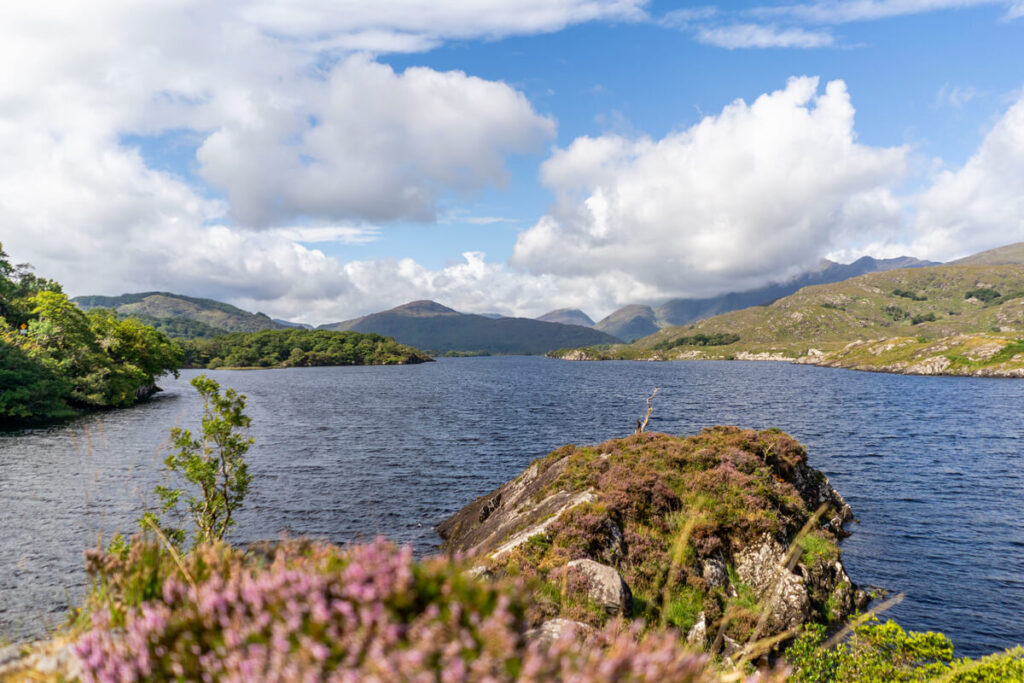
7. Impressive Dingle Peninsula
A special highlight of our Ireland tour was exploring the Dingle Peninsula. In addition to beautiful beaches such as Inch Beach and Coumeenole Beach, the peninsula impresses with spectacular coastal views, imposing cliffs, and small bays.
You shouldn’t miss the so-called Slea Head Drive, a 30 km long panoramic road at the very end of the peninsula (be sure to drive clockwise). Popular photo stops can be found at Blasket’s View and Dunquin Pier.

A detour to the small town of Dingle is also worthwhile. Colorful houses, lively pubs, great cafes, shops, and restaurants await you here. We recommend Café Bean in Dingle and the Nourish Café. The small harbor town is wonderful to explore on foot. Plan at least 1 to 2 hours here.
Numerous boat trips depart from the harbor, where dolphins, whales, and seals can be spotted. A major highlight for a long time was Fungie the Dolphin, who had lived in Dingle Bay since the 1980s and playfully accompanied the boats. However, it was last seen in October 2020.

Popular Tours on the Dingle Peninsula
- From Killarney: Dingle and Slea Head Peninsula Day Tour*
- Dingle: Sea Safari by RIB Boat*
- Dingle: Slea Head Photo and Sightseeing Tour*
Lovely Accommodation on the Dingle Peninsula
- Murphy’s Pub and Bed & Breakfast*
- The Waterfront*
- Greenmount House*
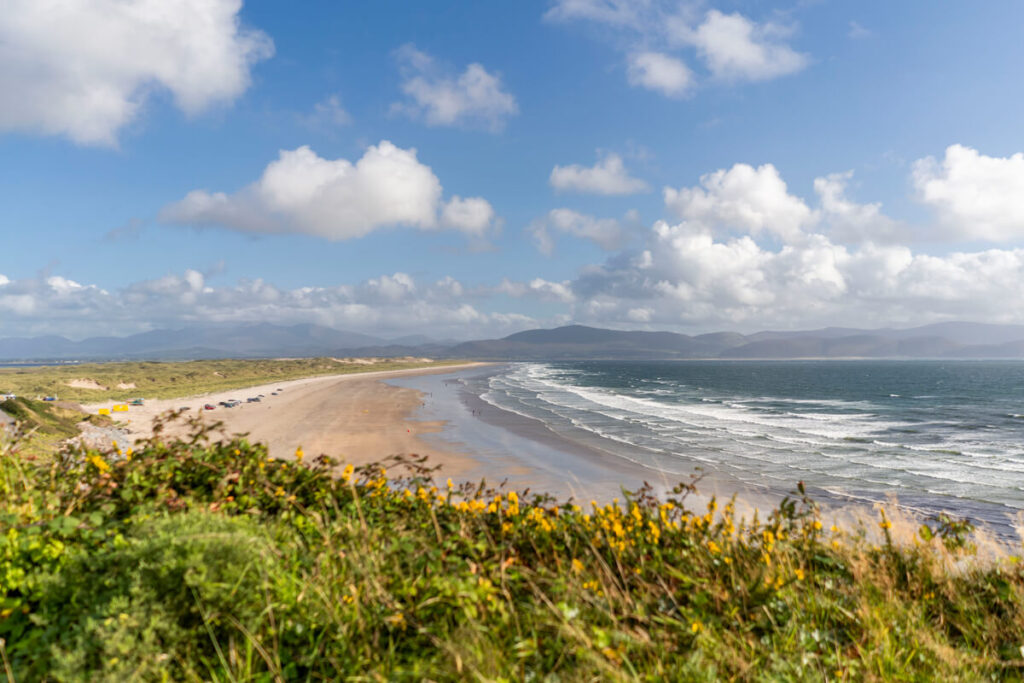
8. Kilkee & Kilkee Cliffs
By chance, we ended up in the small coastal town of Kilkee, which is located about 60 km south of the Cliffs of Moher in County Clare. There are a few good cafés in the town, such as Holly’s Café and Anna’s Café. You can have a wonderful breakfast here. At Anna’s Café, you can get warm and delicious croissants and smoothie bowls in the morning.
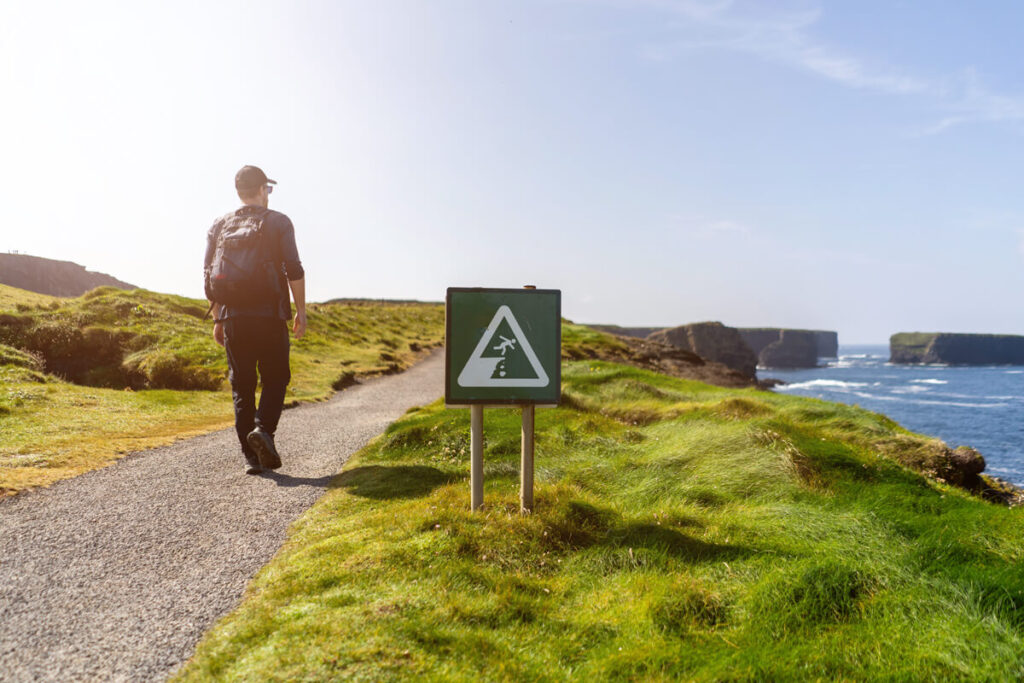
You shouldn’t miss the Kilkee Cliff Walk, which runs along the cliffs and offers breathtaking panoramas of the sea and the surrounding landscape. The approximately 4 km long circular path is well-maintained and also suitable for families with strollers. Driving south from Kilkee, you will reach the impressive Loop Head Drive. This scenic route also features dramatic cliffs and amazing rock formations.

The parking lot at the Diamond Rocks Café costs €2 for 3 hours (height restriction 2.10 m). Campers and caravans can park for free in town. The road leading to the restaurant offers free roadside parking. Here we were able to park our 7 m long campervan safely.
Beautiful accommodation in Kilkee
- Loop Head Lighthouse Attendant’s Cottage*
- Bay View Hotel*
9. The Cliffs of Moher
One of Ireland’s most famous sights are the imposing Cliffs of Moher. They stretch for approximately 14 kilometers along the west coast of County Clare. The cliffs reach a height of up to 214 meters above the Atlantic Ocean and offer breathtaking views of the rough sea, the cliffs, and the surrounding landscape.
Puffins, kittiwakes, and other seabirds also nest here, using the steep cliffs as breeding grounds. The best time to visit to see puffins, for example, is from March to August. Be sure to bring binoculars and a telephoto zoom lens if you want to take nice close-ups.
The visitor area includes an Experience Center with an exhibition, a restaurant, a few shops, an observation tower (O’Brien’s Tower), and a well-developed exploration path that allows you to experience the impressive natural scenery from different perspectives.
 Powered by GetYourGuide
Powered by GetYourGuide
Are the Cliffs of Moher too touristy?
It’s naturally very busy here, and you should be prepared for the fact that many visitors and large tour groups flock to this place every day. It’s quite easy to find your way around, and there’s enough space for everyone at the end. Of course, the atmosphere is less “romantic” and “idyllic” as a result, but the cliffs are still impressive and worth seeing.
The chest-high “wall” that lines the path puts you a bit further away from the cliff edge. In some places, however, you can take some really great photos without risking your life. We saw many people climbing over the “barriers” to get closer to the edge. We really don’t understand that.
Cliffs of Moher Visitor Information
- Address: Cliffs of Moher, Lislorkan North, Liscannor, Co. Clare
- Admission: €12 per person on site (including parking, exhibition & audio guide)
- Discount: cheaper online; only €7 pp in the morning
- Opening times: vary depending on the month (see here)
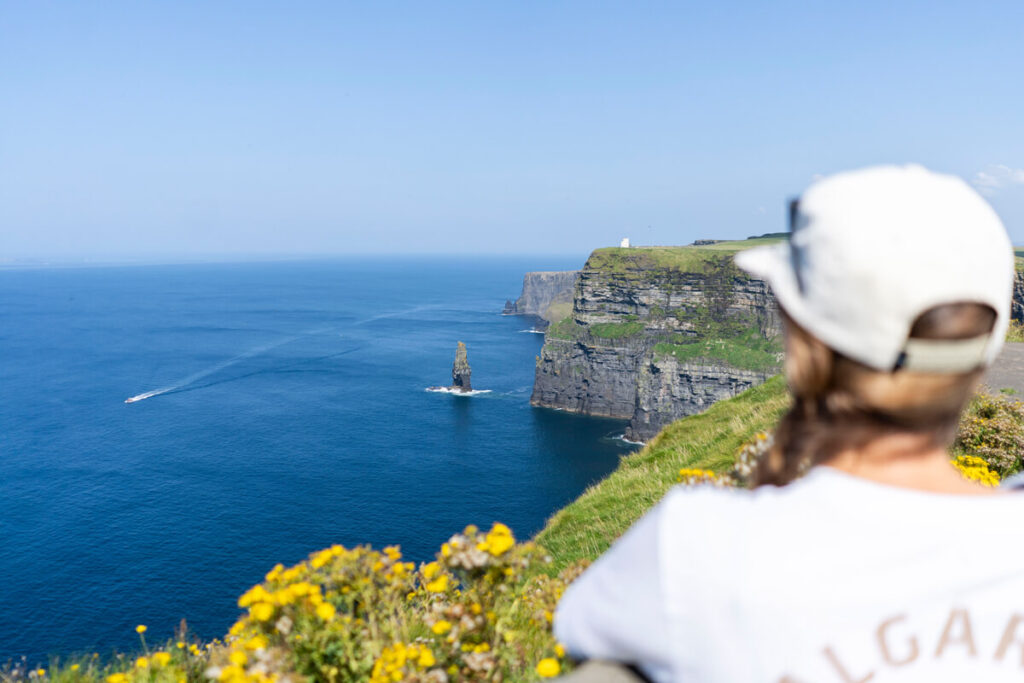
10. Cliffs of Moher Coastal Walk
The approximately 14 km long hike from Hag’s Head to Doolin promises breathtaking landscapes and views over the Atlantic Ocean and the coast. You will always hike along the cliffs. The terrain is an exposed cliff path with narrow and steep climbs, stone steps, farm tracks, and local and regional roads.
For your safety, it is extremely important to stay on the official path and clear of dangerous cliff edges and overhangs. The weather can also change suddenly, with strong winds, rain, or fog. Recently, there have been tragic fatalities, which is why some sections of the path are currently closed (all news here).
It’s best to park for just €5 near Hag’s Head (car park) and take a taxi (The Taxi Company – +353 (086) 6066761) or bus 350 (bus timetable here) from Doolin back to the starting point. This saves you the long return journey. You can see the exact hiking route in the following brochure: Cliffs of Moher Brochure.
Powered by GetYourGuide
11. Charming Village of Doolin
The charming village of Doolin is located just a few kilometers south of the famous Cliffs of Moher and is a popular starting point for visiting these impressive cliffs. Doolin is a super cozy and authentic village. Although there are only 10 houses here, we really liked it.

Be sure to visit the cool restaurant “The Ivy Cottage” and let yourself be enchanted by the delicious dishes and the great atmosphere. Right next door is Gus O’Connor’s Pub and an ice cream parlor. In Doolin, we stayed at Nagles Camping & our motorhome. Caravan Park overnight stay.
Beautiful accommodations in Doolin
- Wild Meadow Huts*
- Oar restaurant and Rooms*
- Hotel Doolin*
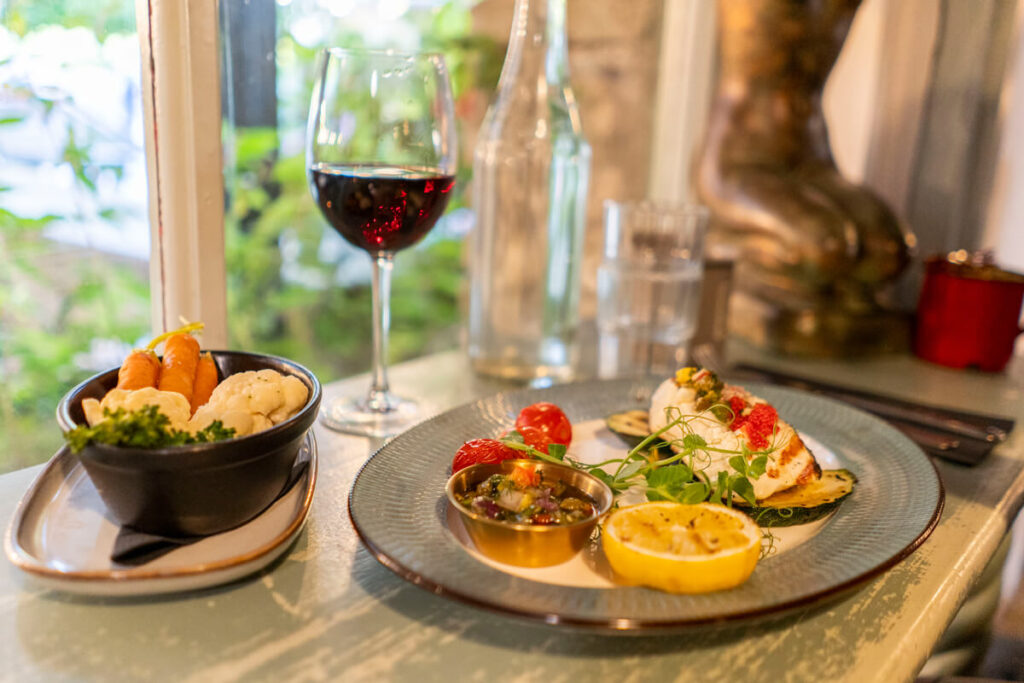
Best time to travel to Ireland
The optimal time to travel to Ireland is between May and September, when the weather is mild and the landscape is lush green. During these months, temperatures range between a pleasant 15 and 20 degrees Celsius, and the days are particularly long in June, with up to 18 hours of daylight.
Spring and summer are ideal It’s an excellent time to explore Ireland’s natural beauty and visit its numerous attractions. We were on the island from late August to early September and experienced very changeable weather.
Although it was never really cold, we had to contend with plenty of gray clouds and rain. Of the 16 days, we only had sunny weather on 5. For our next trip, we would definitely choose mid- or late May.
Travel time by month
- January and February: cool and humid, temperatures between 3°C and 8°C, short days
- March and April: mild temperatures down to 10°C, blooming landscapes, changeable weather
- May and June: relatively dry, less crowded, temperatures up to 18°C, long days
- July and August: peak travel season, warm weather, but more tourists and higher prices
- September: fewer tourists, still mild weather, autumn colors begin to appear
- October: autumnal, temperatures drop (9 to 14°C), changeable
- November: Cooler (6 to 11 °C), the winter months begin, rainier
- December: Cold (3 to 9 °C), festive atmosphere with many Christmas markets
Driving in Ireland
In Ireland, drive on the left, which can be a bit strange at first. Give yourself time to get used to it, especially on the narrow, winding country roads. At roundabouts, it is important to watch out for traffic coming from the right and always drive clockwise.
On rural, often winding roads, keep a sufficient distance from the left edge of the road. Many single-lane roads have layouts where you can stop to let oncoming traffic pass. Also note that there are roads unsuitable for large motorhomes – signs will help you act in time.
We booked our caravan with roadsurfer* and were very happy with it. You can read all about our caravan here: Exploring Ireland by motorhome. We always book small rental cars on the website www.billiger-mietwagen.de*. We have been very satisfied with this platform for many years.
Speed limits in Ireland:
- 50 km/h: In built-up areas
- 80 km/h: On country roads
- 100 km/h: On national roads (comparable to federal highways)
- 120 km/h: On motorways
Important information for some routes:
- Ring of Dingle: Always drive clockwise
- Ring of Kerry: Trucks and buses drive anticlockwise
- Ring of Beara: Best driven clockwise
Parking
In towns and smaller villages Parking with a large motorhome can sometimes be challenging. It is a good idea to plan parking options in advance and use special motorhome parking areas or park-and-ride parking spaces. We often used Google Maps and the Park4Night app to find suitable parking spaces.
In most cases, we did not have toYou have to pay a parking fee, unless you parked directly in town, like in Killarney or Cobh. In those cases, the cost was usually between €1 and €2 per hour. Sometimes a parking disc (“parc disc”) was also required. Important: Yellow lines on the side of the road mean no parking!
You will also occasionally come across parking spaces with height restrictions, usually around 2 meters. This is obviously a problem with a motorhome, but we were always able to easily find an alternative nearby. This can certainly be more difficult at times.
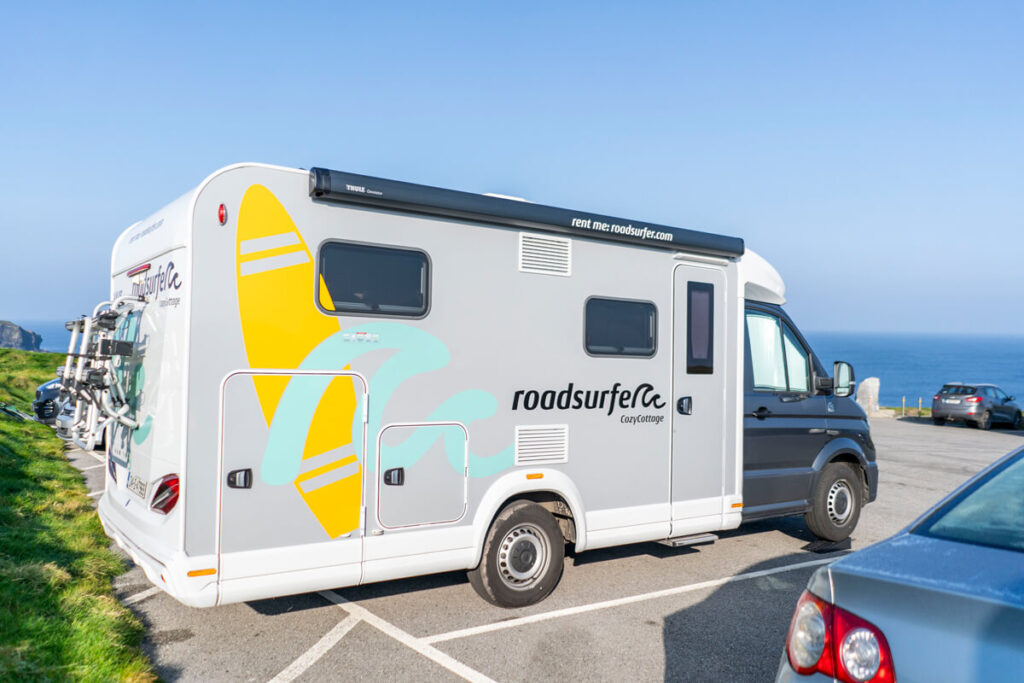
Fueling
Fuel stations are easy to find in both urban and rural areas of Ireland. However, in more remote regions, particularly in the west of the country, you should make sure to fill up in time, as there are fewer stations there.
Most gas stations have long opening hours, and some along the motorways are even open 24/7. However, in rural areas, they often close earlier, especially on Sundays. We were able to pay easily with credit and debit cards at all gas stations.
Toll Roads
Tolls apply on some motorway sections in Ireland. It’s a good idea to find out about the fees and payment methods in advance. We were able to pay conveniently everywhere by credit card. In most cases, the toll for us was €2.30, as motorhomes are tolled like cars. Toll sections.
Of particular importance is the M50 around Dublin, which uses an electronic toll. There are no toll stations here – payment must be made online or in selected shops before or after the journey (www.eflow.ie). A forgotten payment can result in a penalty.
Cost of Our Tour of Ireland
The cost of our tour of Ireland was approximately €1,200 per person. You can find a detailed list of all costs in our article ☞ Traveling Ireland with a campervan.
Packing list for an Ireland round trip
The packing list for a campervan trip is similar to the packing list for a houseboat trip. We have listed the most important things that you should definitely not forget.
- Waterproof and windproof clothing (rain jacket, water-repellent trousers)
- Sturdy shoes for hiking (Bolles hiking boots* | Marcos hiking boots*)
- Warm clothing (it can get cold on board)
- Slippers/clogs/flip flops for in between and toilet/shower use
- Swimsuit & Towel (preferably quick-drying)
- Headwear (cap & hat) and sunglasses
- Sunscreen & mosquito spray (better to buy cheaply in Germany)
- Games for bad weather days (e.g. Cabo*, The Mind*, Wizzard*, Scout*)
- Power adapter for Ireland*
- Power bank* for charging cell phones in between
- Flashlight* for the evening/night
- Fairy lights (often makes the atmosphere much more cozy)
- Binoculars (always good, especially for animal observation & night sky)
- Travel guide for Ireland (e.g. Michael Müller Verlag* or DuMont*)
Our conclusion about the Ireland tour
We really liked Ireland from the start. We also really enjoyed exploring the country with our little “home on four wheels” (☞ Traveling Ireland with a campervan). The Emerald Isle has so much to offer, and we quickly realized that we definitely have to come back. On our next trip around Ireland, we definitely want to explore the north, starting from Donegal.
The Irish are very relaxed, hospitable, and open-minded. It’s easy to make contact with them and help is readily available if needed. Although we underestimated the changeable weather somewhat, we had the right clothing (layering & functional clothing) and a lot of good humor.